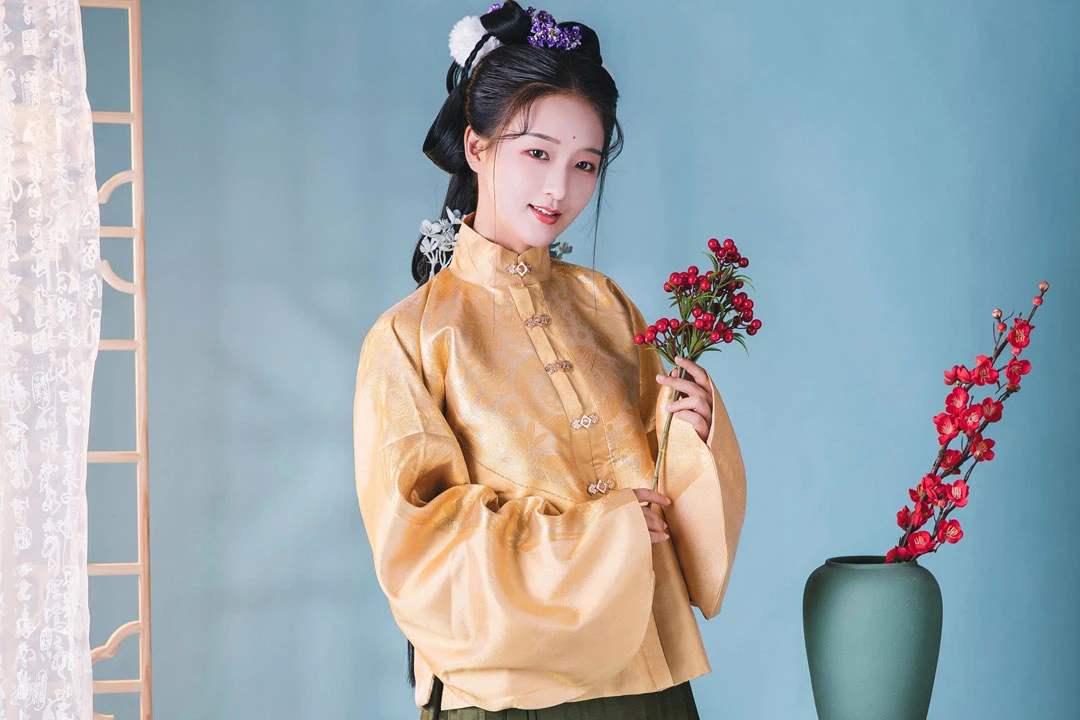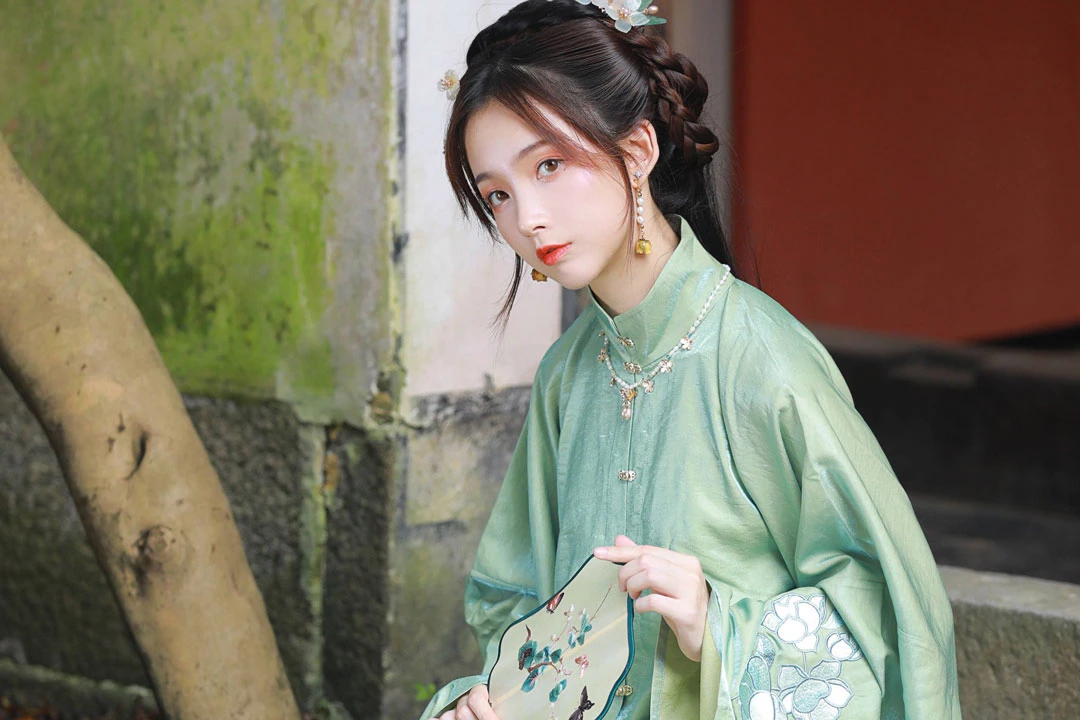The rich tapestry of Chinese art and culture includes a treasure trove of historical elements waiting to be explored. One such facet is the depiction of women’s fashion in the Song Dynasty, a period marked by its elegance, simplicity, and cultural refinement. In this article, we delve into the intricacies of Song Dynasty women’s hanfu jacket as portrayed in art and explore the possibilities of infusing these elements into modern fashion design.
The Song Dynasty, known for its emphasis on etiquette, traditional values, and cultural sophistication, laid the foundation for a unique style of women’s clothing. The attire, characterized by wide sleeves, intricate embroidery, and a focus on modesty, reflected the prevailing Confucian ideals of the time.
One of the iconic representations of Song Dynasty fashion is found in Zhou Fang’s masterpiece, “Adorning with Flowers.” The painting captures the essence of the era with its depiction of women donning ankle-length dresses paired with large-sleeved silk robes, revealing the artist’s mastery in portraying the delicate and transparent fabrics of the Tang Dynasty.
Large-Sleeved Hanfu Jacket (大袖衫)
Description: The large-sleeved shirt became a prominent feature in women’s fashion during the mid to late Tang and continued to flourish into the Song Dynasty. The wide sleeves, often exceeding four feet, were paired with long skirts, and silk robes, and adorned with elaborate accessories like gold and jade flower ornaments, earning the nickname “Adorned with Flowers” attire.
Post-Tang Dynasty, there was a shift away from the influence of foreign clothing, and women’s fashion embraced broader styles. Notable garments included the wide-sleeved double-fronted shirt, long skirts, and silk drapes, showcasing the fashion choices of aristocratic women during important occasions like court gatherings and weddings.
Zhou Fang’s painting, now housed in the Liaoning Provincial Museum, beautifully captures the leisurely lives of noblewomen during spring and summer. The artwork portrays them strolling through courtyards, engaging in various activities with an air of elegance and sophistication.
Tang Dynasty clothing, reflecting the prosperity and grandeur of the era, laid the foundation for the rich and diverse styles seen in Song Dynasty fashion. The freedom of women’s attire in the Tang Dynasty, even adopting male clothing at times, was a testament to the societal openness of the period.
Designers can seamlessly incorporate Song Dynasty elements like the “cross-collar” and “parallel lapels” into modern shirt designs, preserving the historical aesthetic. The distinctive wide sleeves characteristic of Song Dynasty fashion can inspire contemporary blouse and jacket designs, maintaining a balance between tradition and modernity.
Traditional flower and bird patterns, often seen in Song Dynasty attire, can be reintroduced in modern fashion using popular colors, creating a harmonious blend of classic and contemporary. Designers can use traditional Song Dynasty colors, such as light greens, blues, and grays, in modern clothing, infusing a sense of nostalgia while catering to modern tastes.
Integrating traditional elements discreetly, such as in linings or concealed openings, adds a touch of sophistication without overwhelming the overall design.
Despite Confucian classics prescribing gender-specific attire, historical records reveal that Song Dynasty women occasionally wore men’s clothing, reflecting a relatively open societal attitude towards female attire. The trend of women adopting male-like attire was influenced by external factors, as documented in various historical sources.
Conclusion
Song Dynasty women’s fashion, characterized by its grace and refinement, continues to inspire modern designers seeking to blend tradition with contemporary aesthetics. By carefully integrating key elements and patterns, designers can pay homage to this historical period while creating fashion that resonates with today’s discerning audience. As we look back to the elegance of the Song Dynasty, we also look forward to a future where the beauty of the past seamlessly coexists with the trends of today.


